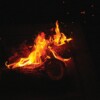A self-identifying evangelical Christian college that welcomed prominent theologically conservative and liberal Protestants scholars and pastors to campus for a Bible conference might defy the expectations of many today. But this happened annually at Grove City College during the tenure of its founding president Isaac Ketler’s annual Bible conference in the late nineteenth and early twentieth century. In 1904, for example, two noted theological conservatives—Francis Landey Patton, the theologian and president of Princeton Seminary, and John Davis, an Old Testament scholar at Princeton—joined two theological liberals—Borden Parker Bowne, the Boston University idealist philosopher, and Hugh Black, pastor of the University Free St. George’s Church in Edinburgh—to spend ten days preaching and teaching together. Several hundred ministers, laypeople, and students attended the conference.
That Ketler welcomed both conservatives and liberals to his Bible conference might not only surprise some today, but it also challenges the conventional “two-party” interpretation of twentieth-century American Protestantism. The fundamentalist-modernist controversies of the 1920s and 1930s that caused a schism in the Presbyterian Church in the U.S.A. (and in other Protestant denominations) have sometimes been read backward into the forty years before 1920. Ketler, however, does not fit the standard terms used to describe participants in these controversies; he was too evangelical in his theology to be characterized as a liberal, and too ecumenical to be considered a fundamentalist. A number of recent studies demonstrate that the “two-party” interpretation does not accurately capture the entire theological or ecclesiastical landscape of early twentieth-century mainline Protestantism.1 In other words, not all who remained in mainline churches were militant modernists. Nor were all evangelicals fundamentalists. Instead, the ecumenism of the mainline included a far wider range of theological positions than the binary fundamentalist-modernist framework suggests.
Such a perspective does not deny the real conflicts between fundamentalists and modernists. Before the tumultuous ecclesiastical conflicts of the 1920s and 1930s, however, many northern evangelical Presbyterians, like Ketler, were not proto-fundamentalists but rather non-sectarian evangelicals who stood squarely within the mainstream of the Anglo-American evangelical tradition. And Ketler stood in that mainstream for theological reasons.
Ketler’s Stout Evangelical Theology
Grove City’s original charter defined the college as “an undenominational but evangelical Christian school.” While technically non-denominational, Grove City was a de facto PCUSA college. Ketler, a Presbyterian minister, certainly considered Grove City a Presbyterian institution. In a 1909 appeal to the denomination’s Board of Education for financial support, he noted that the college was for “all intents and purposes . . . devoted to the interests of the Presbyterian Church.” He pointed to the fact the college had a long record of sending its graduates into the Presbyterian church as pastors and missionaries as evidence.2
Although a rising tide of skepticism, manifested most notably in scientific naturalism and historicism, questioned the intellectual credibility of traditional Protestant theology’s supernaturalism in the late nineteenth century, Ketler affirmed traditional evangelical Presbyterian convictions throughout his life. In a 1910 sermon, for example, he professed a high view of the inspiration and authority of Scripture: “I believe in the Bible. I accept, and offer its truths to others without equivocation . . . . I know too much of the power of the Gospel to doubt that the Bible was written by holy men of old as they were moved by the Holy Ghost.” Ketler criticized “German Rationalism” for reducing the Bible to a mixture of “fables,” “myths,” and “errors” that “human reason” needed to sift through to find inspiring moralisms.3
While some theologians questioned the penal substitutionary atonement theory and Christ’s bodily resurrection, Ketler did not. “The Vicarious suffering of the Saviour, which rendered plenary satisfaction to the justice of God,” he wrote in 1894, “will only avail as the Holy Spirit awakens an appropriating and justifying faith in the righteousness of Christ.”4 In a 1903 sermon, he complained about “foolish people” who profess to be Christians but “think it is a mark of culture or mental virility to be just a little doubtful” about Christ’s bodily resurrection.5
Another trend among Protestants made Ketler anxious. As Ketler exhorted students in an 1894 sermon, “Fear not the doubt, but fear the self-complacency of blind belief. Fear not the doubt, but fear the deadening influence of a traditional and intolerant faith.”6 To Ketler, Christian scholars should engage, not flee from or uncritically adopt, these contemporary challenges to the intellectual credibility of the faith.
Evangelical Ecumenism
The annual summer Bible conferences reflected Ketler’s evangelical ecumenism. The 1904 conference was rather typical. It was not only ecclesiastically eclectic but also, judging by the standards of the later fundamentalist-modernist controversies, theologically diverse. The fact that Francis Patton and Borden Bowne shared the dais illustrates this point. As a Princeton professor and then as president of the university and later the seminary, Patton ranked among the day’s ablest defenders of Scottish Common-Sense Realism. Patton’s reputation as a staunch advocate of Old School Princeton theological orthodoxy, however, exceeded his notoriety as a philosopher. Patton had played a decisive role in ousting Union Seminary’s Charles Briggs from the Presbyterian ministry for heresy in 1892.7
In contrast, Bowne not only advocated a modified version of German idealist philosophy but was a theological liberal who stood on the cutting edge of the modernist movement. Just weeks before the 1904 Bible conference, the New York East Conference of the Methodist Church put Bowne on trial for heresy for allegedly denying the Trinity and Christ’s substitutionary atonement among other doctrines. His conference found him not guilty, but that exoneration was more a testimony of the liberal direction of the Methodist Church than Bowne’s orthodoxy.8 Although Patton and Bowne clearly sat on opposite sides of the philosophical and theological aisle, the significant differences between them did not prevent Ketler from inviting them both to teach at Grove City.
No one in the Grove City College community was scandalized by the ecumenical composition of the Bible conferences. The Board of Trustees actively supported Ketler’s ecumenical approach. The college’s greatest benefactor, J. Newton Pew, helped underwrite the cost of the Bible conferences.9
During the fundamentalist-modernist controversies of the 1920s and 1930s, some Grove City Bible conference speakers became outspoken modernists who criticized the fundamentalist movement. For example, William Farmer, a New Testament professor at Western Theological Seminary [now Pittsburgh Seminary] who spoke at Grove City in 1913, signed the 1924 Auburn Affirmation. This document deemed it unconstitutional to require PCUSA ministerial candidates to affirm certain doctrines in the Westminster Confession as essential, such as Christ’s substitutionary atonement. Instead, the Affirmation stated that such traditional interpretations of the Bible’s teaching were “not the only theories allowed by the Scriptures” and the denomination’s standards.
Other Grove City Bible conference speakers became fundamentalists. For example, A. C. Dixon, pastor of Ruggles Street Church in Boston, addressed the conference in 1902. Dixon later became the pastor of the Moody Church in Chicago and then Charles Spurgeon’s Metropolitan Tabernacle in London and coedited The Fundamentals, a series of booklets published from 1910 to 1915 defending conservative Protestant theological views. Although The Fundamentals advocated theological positions not quite as militantly anti-modernist as fundamentalists would demand in the next decade, Dixon proved to be a forceful critic of liberalism.10
Still other speakers at Grove City’s Bible conference tried to maintain the traditionally evangelical Presbyterian theological orientation without becoming separatist fundamentalists. Princeton Seminary professor Charles Erdman, for example, who spoke at the conference several times, remained a professor at Princeton after J. Gresham Machen left the seminary in protest of the presence of modernists on the seminary’s reorganized Board of Trustees in 1929. Francis Patton joined Princeton’s reorganized board in 1929 as did Weir Ketler, Isaac’s son and Grove City College’s third president.
Because Ketler died in 1913, it is unclear where he would have stood on the fundamentalist-modern controversies that racked the northern Presbyterian church in the two subsequent decades. Ketler, however, lacked one major trait that later came to characterize many Presbyterian fundamentalists: an impulse to separate from those with differing theological outlooks.
The source of Ketler’s ecumenism was his evangelical theology. Kelter’s confidence in the compelling nature of truth fueled his engagement with the contemporary intellectual landscape. To him, deeper knowledge could be ascertained only by directly engaging the arguments that challenged Christian beliefs. He harbored no Pollyanna illusions about the intellectual challenges that traditional Christianity faced. “The immediate future is not so bright, at least to all eyes,” Ketler told an audience at Union Seminary in 1908. “But pessimism is no part of the gospel. The good will far outshine the ill. Truth will prevail.”11 His robust evangelical convictions fueled Ketler’s confidence. He was not driven by fear but instead by his love to obtain a deeper and broader understanding of truth as revealed in special and general revelation. For Ketler, pursuing truth through constructive engagement with ideas across the theological and philosophical spectrum was one constitutive purpose of a Christian liberal arts college. While conservatives and liberals might have been sitting at different theological tables at Ketler’s annual Bible conference, they were still gathering under the same tent.
Although World War II brought an end to Grove City’s annual Bible conference, Grove City, like other self-identifying evangelical colleges and universities, continues to face challenges and opportunities. Today, evangelical institutions continue to confront critics who question the intellectual merit of Christianity and its relevance in higher education. Others do not doubt the credibility of Christianity but harbor fears that intellectual engagement with contemporary challenges might lead institutions astray. But if an institution has a healthy confidence in its own character and convictions, it has an opportunity to encourage its community members to hone their faith and their intellectual commitments by engaging other voices without fear but with humble confidence, as Ketler put it more than a century ago, that truth will ultimately prevail. Further, a careful examination of the early twentieth-century history of other Christian colleges and universities would likely reveal that Grove City College was not alone in its efforts to constructively engage diverse views as part of its mission as a Christian liberal arts institution.
*This essay was adapted from P. C. Kemeny, “The Evangelical Ecumenism of Isaac Ketler,” Journal of Presbyterian History 102 (2024): 20-34.
Footnotes
- On the “two-party” interpretation see Martin Marty, Righteous Empire: The Protestant Experience in America (New York: Dial Press, 1970). For recent challenges to that line of interpretation, see Darren Dochuk, From Bible Belt to Sun Belt: Plain-Folk Religion, Grassroots Politics, and the Rise of Evangelical Conservatism (New York: Norton, 2011); Timothy Gloege, Guaranteed Pure: The Moody Bible Institute, Business, and the Making of Modern Evangelicalism (Chapel Hill: University of North Carolina Press, 2017); Barry Hankins, “Marsden and Modern Fundamentalism,” in American Evangelicalism: George Marsden and the State of American Religious History, ed. Darren Dochuk, Thomas Kidd, and Kurt Peterson (Notre Dame, IN: University of Notre Dame Press, 2014), 141-165; David Hollinger, Christianity’s American Fate: How Religion Became More Conservative and Society More Secular (Princeton University Press, 2022).
- Isaac Ketler to The College Board of the Presbyterian Church in the United States of America, February 9, 1910; Ketler Papers, Grove City College Archives.
- Isaac Ketler, “Annual Address before the YMCA in Butler, PA, November 1888,” Ketler Papers.
- Isaac Ketler, “The Problem of Life,” Homiletic Review 27 (1894): 132.
- Isaac Ketler, “The Deity of Christ,” Ketler Papers.
- Ketler, “The Problem of Life,” 134.
- P. C. Kemeny, Princeton in the Nation’s Service: Religious Ideals and Educational Practice, 1868-1928 (New York: Oxford University Press, 1998), 97-100.
- Harmon Smith, “Borden Parker Bowne Heresy at Boston,” in American Religious Heretics: Formal and Informal Trials (Nashville: Abingdon Press, 1966), 148-187.
- Weir Ketler, An Adventure in Education (New York: Newcomen Society in North America, 1953), 19-20.
- “Grove City Bible Conference,” Mercer Dispatch and Republican, July 11, 1902, 1; John Stackhouse, “Not Fundamentalist, not Conservative, and not Liberal: The Fundamentals and the Mainstream of American Evangelicalism,” Christian Scholars Review 52 (2022): 7-24.
- Isaac Ketler, The World’s Need of a Social Gospel,” Homiletic Review 56 (1908): 395.






















